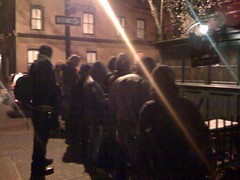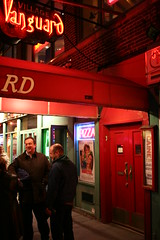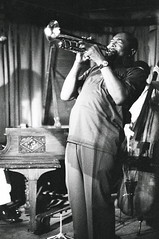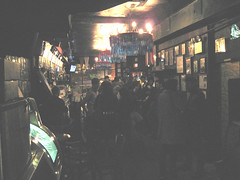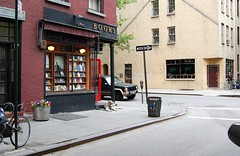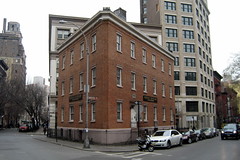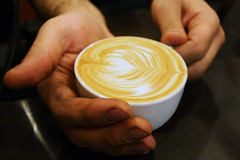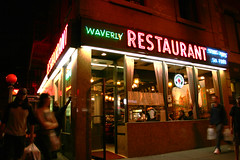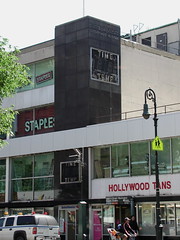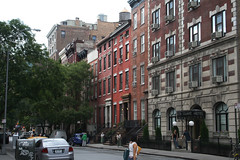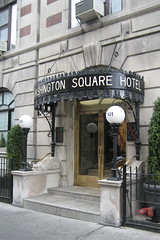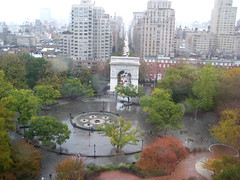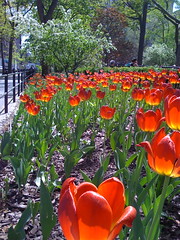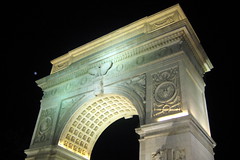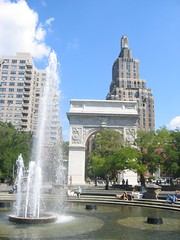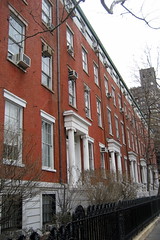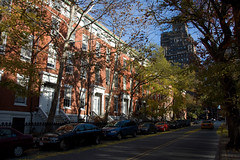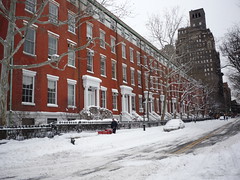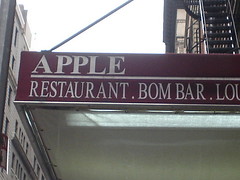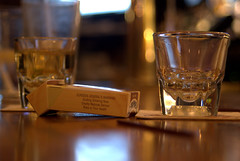South:
Corner (360-374 6th Ave): "A brilliantly conceived,
designed, detailed and executed Post Modern apartment
house" (AIA Guide) built 1986.
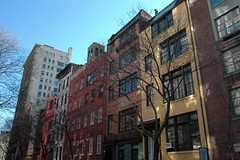
120: Hoaxster Joey Skaggs convinced news media in
1976 that this building was to be the site of a
Celebrity Sperm Bank auction.
118: Max Eastman
lived here from 1909 until 1911, the year before
he became the editor of The Masses. He moved back to the
same apartment in 1916.
116: On this site was the house of
Anne Charlotte
Lynch, who hosted famous literary salons that attracted the
likes of William Cullen Bryant, Horace Greeley, Margaret
Fuller, Fitz-Greene Halleck, Herman Melville, Bayard Taylor. Poe
supposedly debuted "The Raven" here.
114: Pink townhouse was the home of
Celeste Martin, an eccentric
Village character who died in 2019 at the age of 98. She inherited eight houses in the neighborhood from her father, Edmond Martin, a French immigrant who served as the model for
Mr. Appopolous in the musical Wonderful Town.
112: Painter Everett Shinn, part of
the "Ashcan School," lived and worked here in 1911; his Waverly Place Players, an amateur
satirical troupe, performed in a theater he installed in this building.
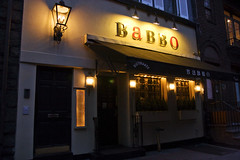
110:
Babbo, Italian owned by celebrity
chef Mario Batali.
Was The Coach House, a Southern restaurant
that claimed the Roosevelts as customers.
The
building was originally a carriage house
for Daniel's Department Store, and later Wanamaker's.
108: The address of journalist
Richard Harding Davis,
whose dispatches for the Hearst newspapers helped start
the Spanish-American War.
104: On the TV show Mad Men, Don Draper gets an
apartment here after he splits up with his wife.
102: Was the address of the Island Mission for
Cheering the Lives of the Poor and Sick, founded 1887.
Corner (29 Washington Square W): Eleanor Roosevelt took an
apartment here in 1942; it was her main residence
from FDR's death in 1945 until 1949.
| 
